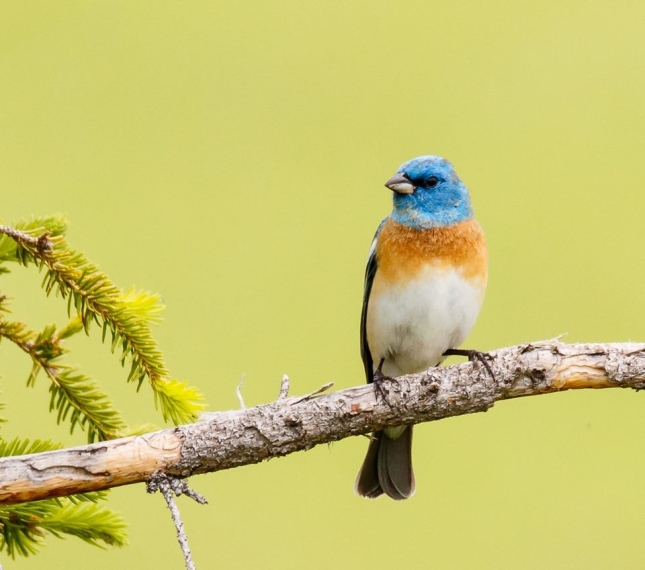Fun Lazuli Bunting Facts
 The Lazuli Bunting got its name from the lazuli gemstone, because of the male’s rich lazuli color on their backside. The male’s breast is a rusty orange color. Females are a softer colored blue and brown. The body of the Lazuli Bunting is a stocky finch-like body.
The Lazuli Bunting got its name from the lazuli gemstone, because of the male’s rich lazuli color on their backside. The male’s breast is a rusty orange color. Females are a softer colored blue and brown. The body of the Lazuli Bunting is a stocky finch-like body.
Lazuli Buntings live in a variety of different habitats, from brushy hillsides and thickets along fields, wooded valleys, areas near streams, and even recently burned areas. Their elevation range is from sea level, up to more than 9,500 feet. In the areas where they winter in western Mexico, they will live in overgrown fields, as well as agricultural areas, thorn and hedgerow thickets[J1] , and even second-growth pine-oak forests.
They eat a variety of insects and caterpillars, spiders, and butterflies. In addition, Lazuli Buntings will eat berries and will visit feeders, especially if the feeder is filled with proso millet.
Male Lazuli buntings arrive at the breeding grounds several days before the female and will perch where they can easily be seen by the female. Once the female arrives he will follow her around, serenading her until they form a pair bond. During the breeding season they are mostly monogamous; however, some have been known to have additional mates.
The female Lazuli Bunting chooses the nesting location and builds the nest in shrubs, approximately three feet above the ground. She will build the nest in willow, wild rose, ninebark, snowberry, blackberry, or Oregon grape. Female Lazuli Buntings will build the foundation of the nest from items that she has collected, including grasses, strips of bark, and leaves. She weaves these together using spiderweb or the silk from caterpillars, forming a cup-shaped nest. Outside nest dimensions are about 3-1/2” across, with an interior diameter of about 2”. The length of time that it takes for her to build the nest is approximately 5-7 days.
Female Lazuli Buntings will typically have 1-2 broods of 3-4 eggs each. The general size of the eggs are 0.7-0.8 inches wide by 0.5-0.6 inches in length. Coloration of the eggs is a pale greenish-blue or white. The incubation period is 11-14 days, while the nesting period is 9-11 days.
If you would like to attract Lazuli Buntings to your yard, they are partial to white proso millet, sunflower seeds, or nyjer thistle seeds. In addition, they will also appreciate native shrubs for foraging and for nesting.
Image by JT
[J1]

